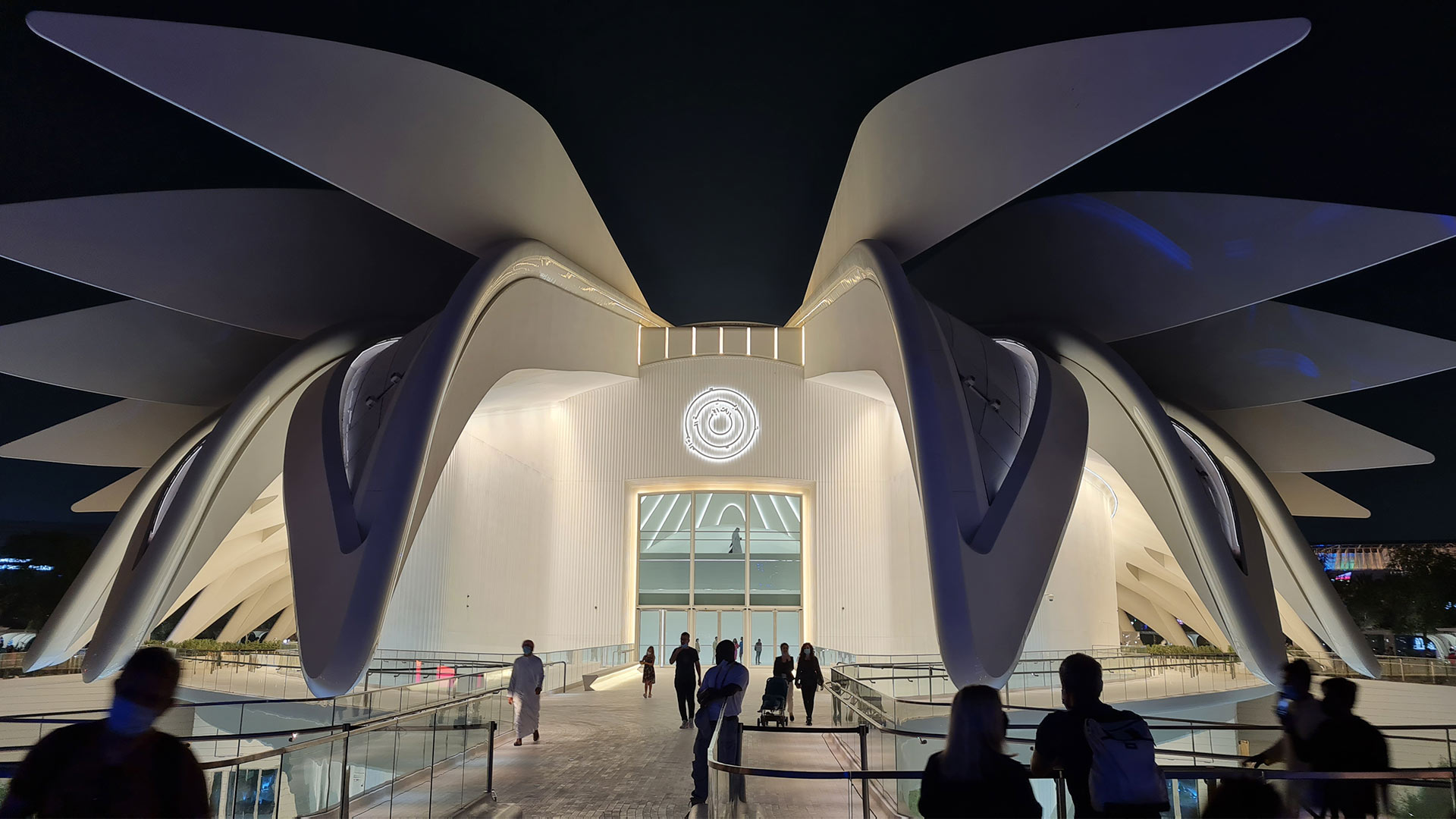The World as One
Showing the spirit of celebration and coming together (despite the pandemic), Dubai opened its doors to the world at the start of October 2021 for Expo 2020 and the gathering of over 190 countries.
With the theme “Connecting Minds and Creating the Future” world class designers, architects and artists (amongst many other professions) were given a platform to showcase their ideas and cultures. Three districts – Sustainability, Opportunity and Mobility – support the theme, each district having its own pavilion whilst hosting an impressive number of country pavilions that offer an insight into their history, future, culture and innovations.
Having visited Expo six or seven times (I can’t quite remember!), I realise the scale of planning that must have been behind the event and have to say my experience as a visitor was seamless. The extended metro line leading to Expo takes you directly to the heart of the event, Al Wasl Plaza. One remains in absolute awe of the plaza even after multiple visits. The dome itself is a stunning structure; the interior filtered with sunlight during the day and entirely and dynamically lit up using only massive projectors at night to suit the variety of performances that are held there.
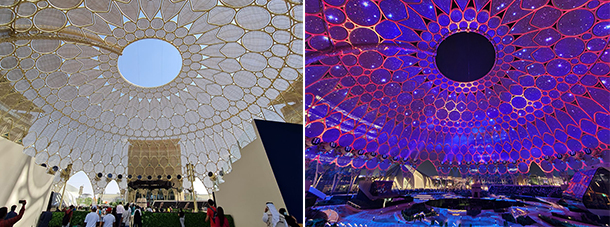 Images: Pragya Chhajer | Jeep Charupumarin
Images: Pragya Chhajer | Jeep Charupumarin
Quirks like buying the Expo passport, which allows you to get stamps from pavilions to document your visit, keeps visitors of all ages enthusiastic and interested.
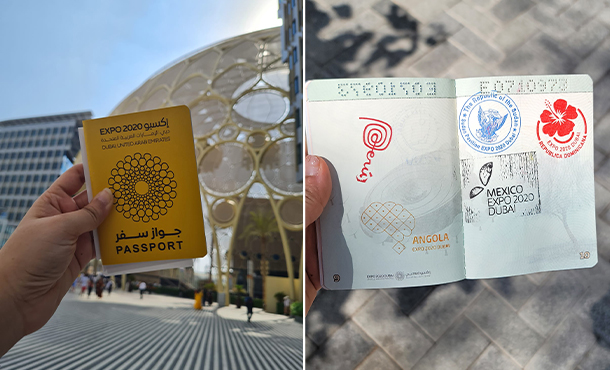 Images: Pragya Chhajer
Images: Pragya Chhajer
A visit to Expo is basically a trip around the world, with each country having put a phenomenal amount of effort into their individual pavilions and what they have to showcase. As the end of the six-month event approaches, I’d like to share some of the pavilions that will stay with me.
UAE Pavilion
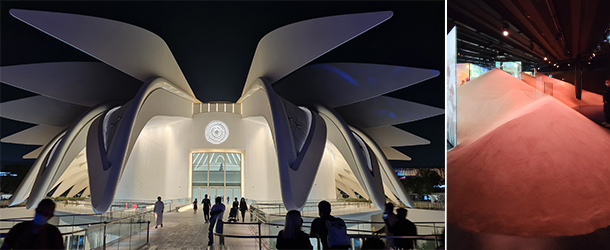 Images: Jeep Charupumarin | Pragya Chhajer
Images: Jeep Charupumarin | Pragya Chhajer
The unmissable structure by architect Santiago Calatrava represents the falcon – the symbol of the UAE. The entire experience within and outside the building is calming. Unlike most of the other pavilions that show a lot of projection mapping and complicated technology, structures and information overload, the UAE uses a minimal and simplistic approach from the start. It has beautifully implemented the most easily available resource of sand to create surfaces to project images and information. It introduces you to the history, the present and vision of the country in terms of technology, agriculture, trade and its growing global charisma.
Finland Pavilion & Luxembourg Pavilion
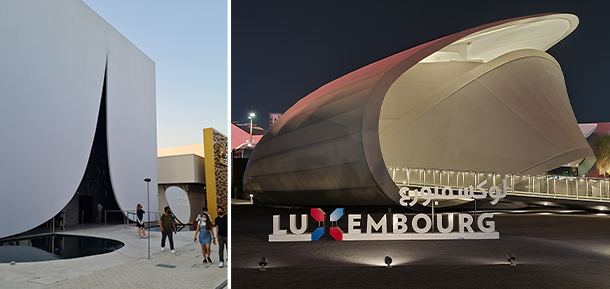 Images: Jeep Charupumarin
Images: Jeep Charupumarin
The facade of the Finland Pavilion is simplistic and represents a pitched tent – aka the “Snow Cape”. Throughout the structure the materials used are wooden slats and industrial fabric, and it showcases why it’s one of the happiest countries in the world with the way the government prioritises communities and their needs. The Luxembourg Pavilion on the other hand is a complex organic enveloping form that makes for a stunning piece of ribbon-like architecture. It offered a multi-sensory experience including the Luxembourg Philharmonic Orchestra and smell of lush woodland, and it even has a slide.
Poland Pavilion & Republic of Korea Pavilion
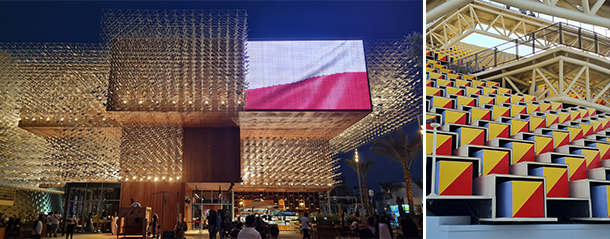 Images: Jeep Charupumarin | Pragya Chhajer
Images: Jeep Charupumarin | Pragya Chhajer
Both of these pavilions are dynamic in nature. Poland depends on the wind to set the mass of wings (representing migrating birds) across the facade in motion and Korea uses motors to rotate the brightly coloured cubes in a synchronous manner. Both are equally impressive.
Spain Pavilion, Switzerland Pavilion & Maldives Pavilion
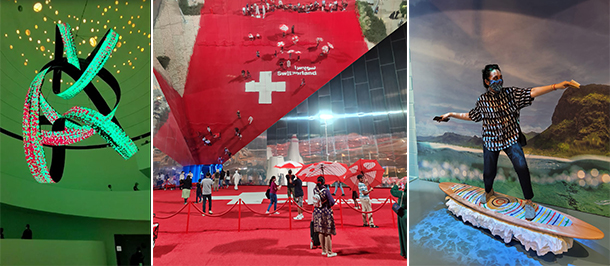 Images: Pragya Chhajer | Jeep Charupumarin | Naveen Mathew George
Images: Pragya Chhajer | Jeep Charupumarin | Naveen Mathew George
These had a lot to offer in terms of human interaction to express creativity. Spain had a central LED sculpture where the specks on the LED screen represents the number of people walking on the downward spiral stairway. And if a person places their hand under the railing the speck on the LED would turn red creating a dynamic sculpture. For Switzerland, the facade is an acrylic mirror converging towards the entrance of the structure. It reflects the people in the queue and doesn’t use any external lighting – it simply reflects the light from its surroundings to stand out. Other pavilions such as the Maldives allow visitors to be a part of the diorama and experience some whimsical fun.
Saudi Arabia Pavilion
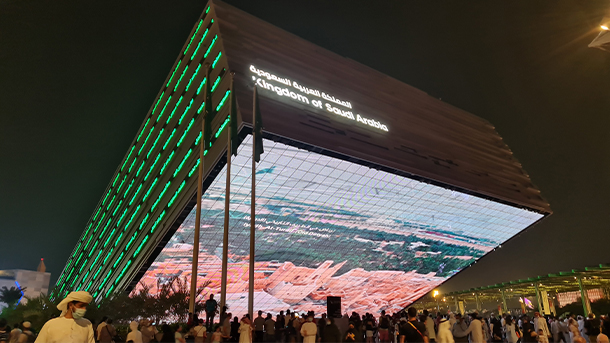 Image: Jeep Charupumarin
Image: Jeep Charupumarin
The second largest pavilion at Expo, the Saudi Arabia Pavilion dramatically juts out of the ground at an angle. The facade that hangs over the plaza has been created entirely from media screens, which behave like huge reflective mirrored panels when turned off.
Italy Pavilion
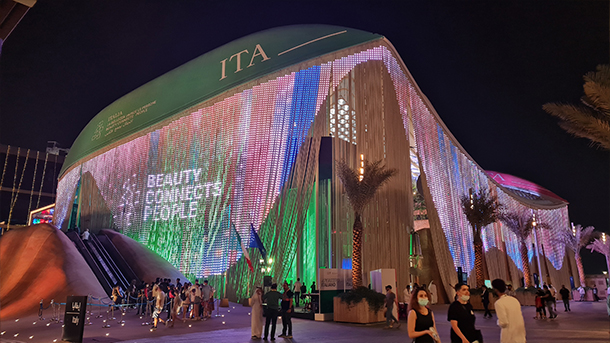 Image: Jeep Charupumarin
Image: Jeep Charupumarin
The Italy Pavilion doesn’t have walls as such – it has a spaghetti-like facade that is intended to represent nautical ropes. Made from recycled plastic, the “ropes” complement the three (green, white and red like the national flag) boat hulls that form the roof of the structure. LED nodes illuminate the 70km of hanging facade to display images and differing colours.
As a design professional it was thrilling to experience a large-scale exhibition like Expo 2020. It confirmed the enormous new possibilities and techniques of sharing information. And observing people and children enjoy interactive media as well as tactile experiences was also educating.
From a lighting perspective and my personal opinion, most of the countries used the same ideas of flashy media screens, LED panels, and linear tape lights to jazz up their pavilions. In some ways it was a relief to visit a lot of the smaller and understated kiosks where creativity was put to use. Regarding the lighting for the common areas of Expo – such as main pathways – it definitely received attention. For example, dim to warm walk-over luminaires have been used to separate the vehicle path from the pedestrian walking areas. And there were nooks that diverge from the pathways, where minimal light has been used well to create a safe, cosy and separated atmosphere despite being surrounded by a lot of hustle and bustle.
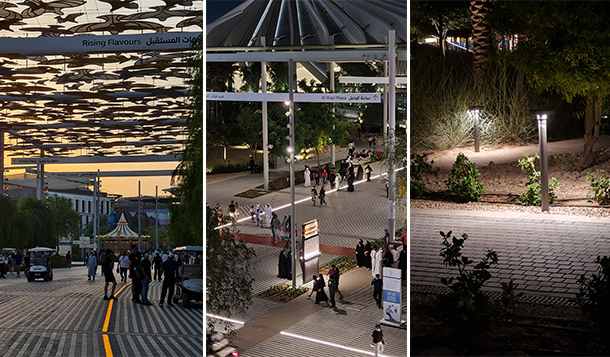 Images: Jeep Charupumarin
Images: Jeep Charupumarin
Only once I left the arena and was back on the metro, when I heard people speaking in various different languages, did it strike me of the magnitude of such an event, which brings so many people all under one roof to learn, to educate and to enjoy and celebrate each other. It really was a once-in-a-lifetime experience.
Blog written by Pragya Chhajer


